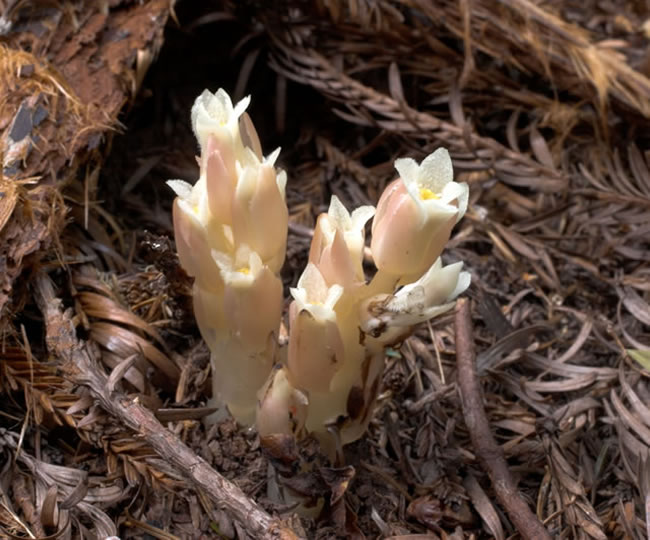Pityopus californicus – California Pinefoot
California pinefoot is an herbaceous perennial wildflower with a limited geographic distribution from California to Washington. California pinefoot is not a commonly encountered wildflower.
 Pityopus californicus. Photo by Barry Rice.
Pityopus californicus. Photo by Barry Rice.
Pityopus californicus (Pityopus – Pine foot from it's habitat) is the smallest of the mycotrophic wildflowers in the Heath family. It ranges in height from 1to 10 centimeters. The entire plant is a pale creamy white. The leaves are crowded and scale-like on the flower stalk (peduncle). The inflorescence is a raceme of 2 to 11 flowers at the tip of the stem. Upon emerging from the ground, the flowers are pendant. As the anthers and stigma mature, the flowers are spreading to all most perpendicular to the stem. In 1950, noted California botanist, J.T. Howell noted that the odor of the mature plants resembled over-ripe Brie cheese and would be attractive to some animals. The fruit is a capsule. As the capsule matures, the flowers become erect. Once ripened, seed is released through slits that open from the tip to the base of the capsules. The plant is not persistent after seed dispersal.
Pityopus californicus flowers from early summer to mid autumn. It is found in mature, moist, shaded, mixed or coniferous forests up to 1,800 meters in elevation.
Conservation Concern
Pinesap is listed as sensitive in Washington.



